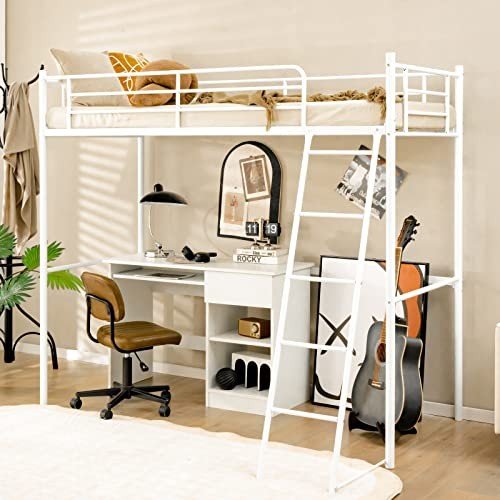The Ultimate Guide to Bunk Beds for Children: Safety, Styles, and Benefits
When it comes to styling a child's space, moms and dads often deal with the dual obstacle of making the most of space while guaranteeing comfort and functionality. Bunk beds have actually become a popular option that addresses these needs, using not just sleeping arrangements however also adding to a space's aesthetic. In this detailed guide, we will explore various aspects of kids's bunk beds, concentrating on their advantages, safety functions, styles, and considerations for parents considering this purchase.
Tabulation
- Benefits of Bunk Beds
- Safety Features to Consider
- Types of Bunk Beds
- Design and Style Options
- Maintenance Tips
- Frequently Asked Questions (FAQs)
1. Benefits of Bunk Beds
Bunk beds offer numerous benefits for children and their parents. Here are some crucial benefits:
- Space-Efficiency: Bunk beds are an outstanding service for smaller sized rooms. By stacking one bed on top of another, more floor space is readily available for play, storage, or study locations.
- Affordable: When kids share rooms, bunk beds can lower the need for acquiring two separate beds, thus saving cash.
- Promotes Social Interaction: Bunk beds can help brother or sisters or pals bond by sharing a space, producing opportunities for social development.
- Enjoyable Factor: The idea of sleeping "up high" adds a spirited element to bedtime, making the shift to sleeping alone much easier for some children.
- Versatile Design: Bunk beds are available in numerous styles, colors, and designs to match any space theme, allowing for modification that shows the kid's character.
2. Safety Features to Consider
Security is vital when it comes to children's furniture, particularly in the case of bunk beds. Here are some critical safety functions to evaluate:
| Safety Feature | Description |
|---|---|
| Tough Construction | Frames made of strong wood or metal are chosen. |
| Guardrails | Should be at least 5 inches high and extend along both sides of the upper bunk. |
| Ladder Design | Guarantee ladders are firmly attached and have non-slip steps. |
| Bed mattress Size & & Fit | Should fit snugly within the frame to prevent gaps. |
| Weight Limit | Always abide by the maker's weight limitation suggestions. |
3. Kinds Of Bunk Beds
Bunk beds come in a number of designs, catering to various requirements, preferences, and space sizes. Here are some common types:
- Standard Bunk Bed: The the majority of standard type, with one bed on top of another.
- Loft Bed: Features a high upper bed with space below for a desk or play location.
- Futon Bunk Bed: Combines a leading bunk with a futon on the bottom, providing flexibility for seating and sleeping.
- L-Shaped Bunk Bed: This style has the top bunk set at a perpendicular angle to the bottom, producing a small corner area.
- Triple Bunk Bed: Accommodates 3 kids utilizing stacked beds, ideal for large families or sleepovers.
4. Style and Style Options
When it comes to choosing a design for kids's bunk beds, the alternatives are practically limitless. Here are some popular styles:
- Traditional Style: Often made of wood, these bunk beds include ornate details and are ideal for traditional or rustic-themed spaces.
- Modern Style: Characterized by clean lines and minimalist styles, contemporary bunk beds can be made from metal or wood.
- Themed Bunk Beds: Some brands provide bunk beds formed like castles, cars, or playhouses, making bedtime less of a chore.
- Convertible Bunk Beds: These can be separated into 2 specific beds, providing flexibility as children grow.
- Colorful Options: Bunk beds in dynamic colors can add a sense of happiness and playfulness to any room.
5. Upkeep Tips
Preserving a bunk bed is vital for durability and safety. Here are some suggestions:
- Regular Inspections: Check for loose screws or bolts every few months and tighten them as required.
- Cleaning: Wipe down frames regularly to avoid dust accumulation; think about utilizing a vacuum for hard-to-reach locations.
- Mattress Care: Rotate mattresses regularly and use protective covers to prolong their life.
- Expect Wear and Tear: Look for any indications of damage in the wood or metal and think about replacing parts if needed.
- Teach Kids Safety Rules: Encourage kids to utilize ladders correctly and ensure they comprehend the security features of their bed.
6. Frequently Asked Questions (FAQs)
Q1: What age is proper for sleeping in a top bunk?
A1: Typically, kids aged 6 and older are recommended for upper bunk sleeping, as they have the required motor skills to climb up safely.
Q2: Do bunk beds come with a bed mattress?
A2: Most bunk beds are sold as frames just, so you will require to buy mattresses separately. Guarantee that the bed mattress fits the frame snugly.
Q3: Can bunk beds be separated later?
A3: Many styles permit conversion into two specific beds, providing versatility for future needs.
Q4: How can I ensure my kid's security on a bunk bed?
A4: Comply with security requirements and make sure guardrails, a tough frame, and a secured ladder are in place.
Q5: Are there weight limitations on bunk beds?
A5: Yes, always examine the producer's specs relating to weight limitations to ensure security.
Bunk beds for kids can serve numerous purposes while guaranteeing safety and style. With diverse styles and designs offered on the marketplace, moms and dads can find an unit that not just maximizes bed room space however also shows their child's distinct tastes. relevant internet site to any furniture, understanding safety functions, maintenance, and how they suit a kid's way of life will guarantee that these beds stay a useful furnishings service for many years to come.
Through cautious consideration and adherence to security standards, bunk beds can offer a lasting, fun, and functional sleeping option that kids like.

